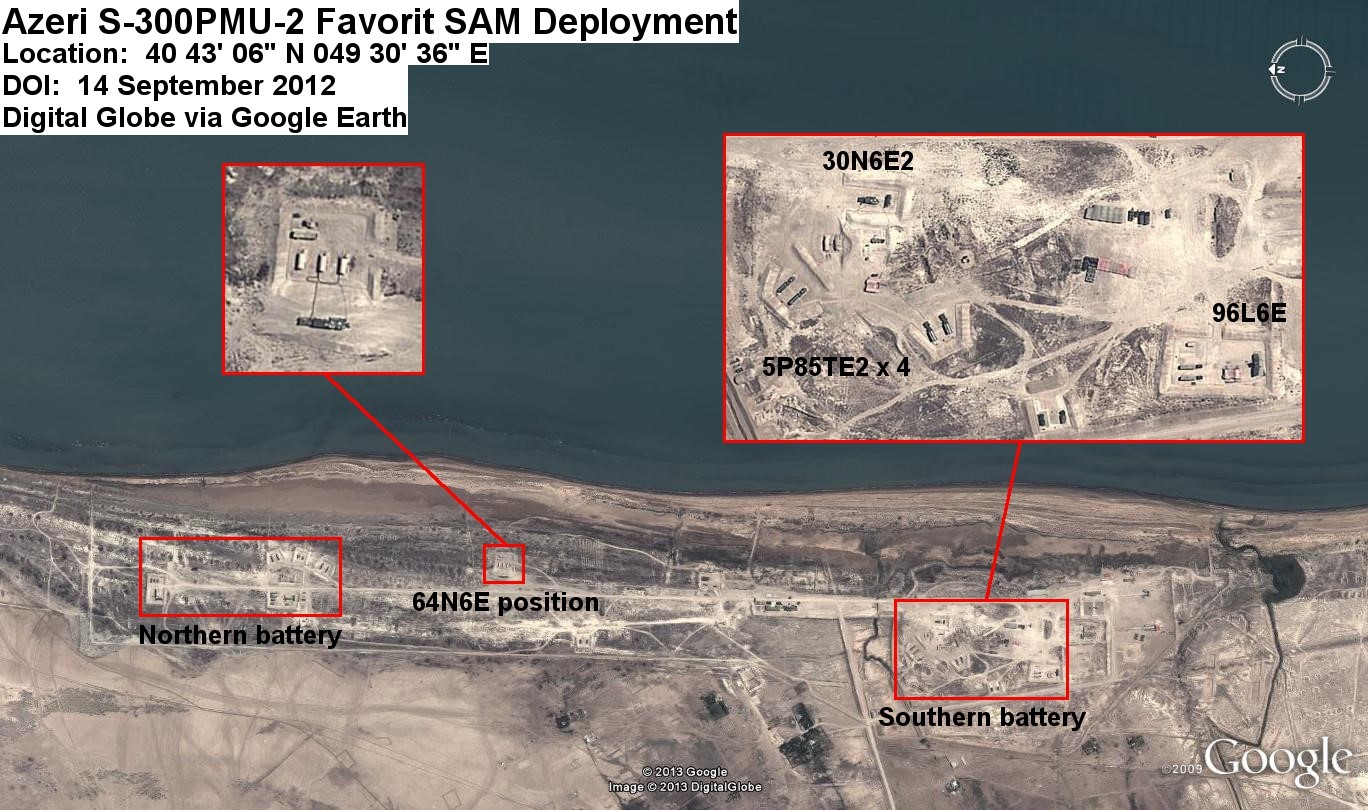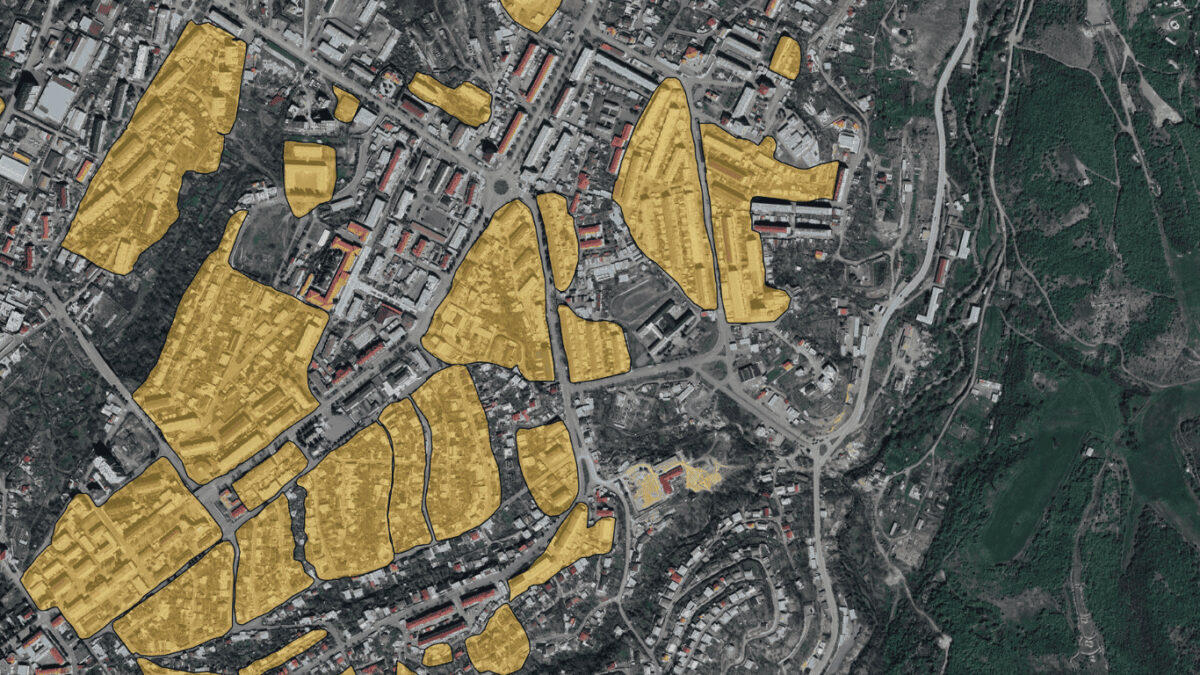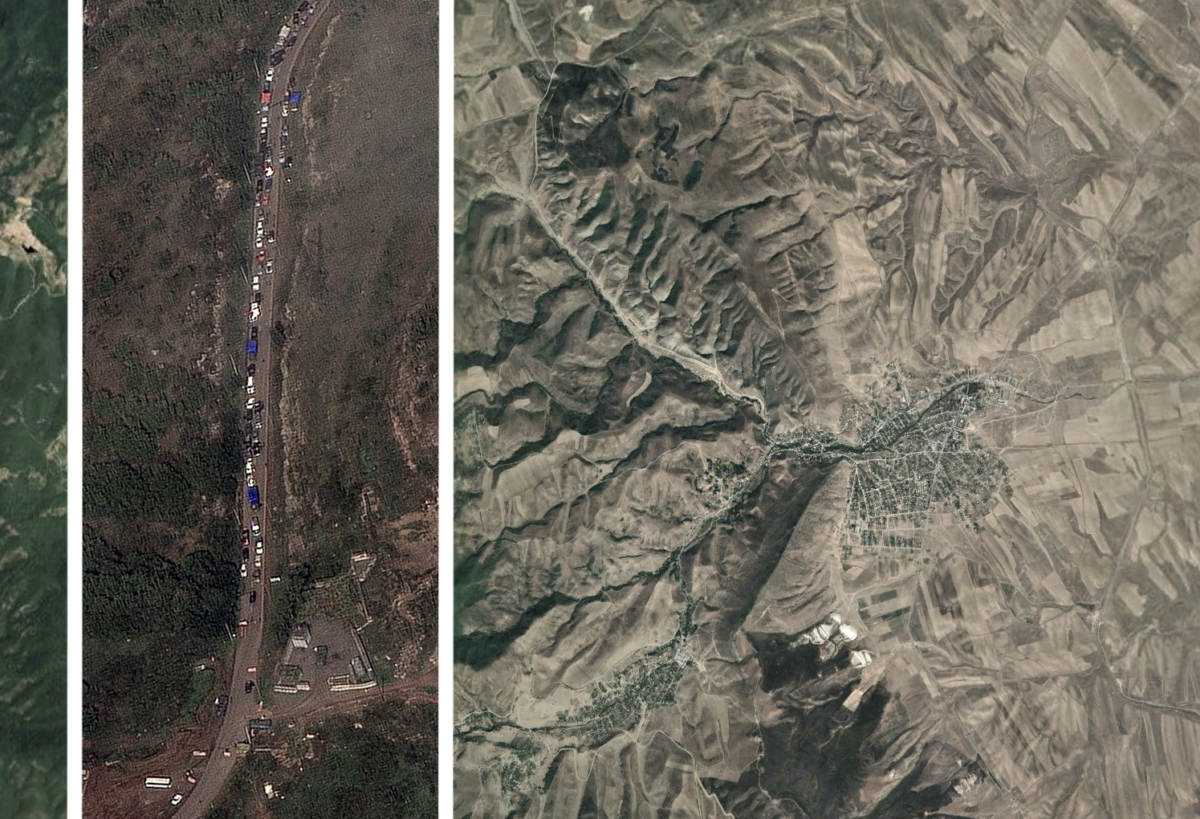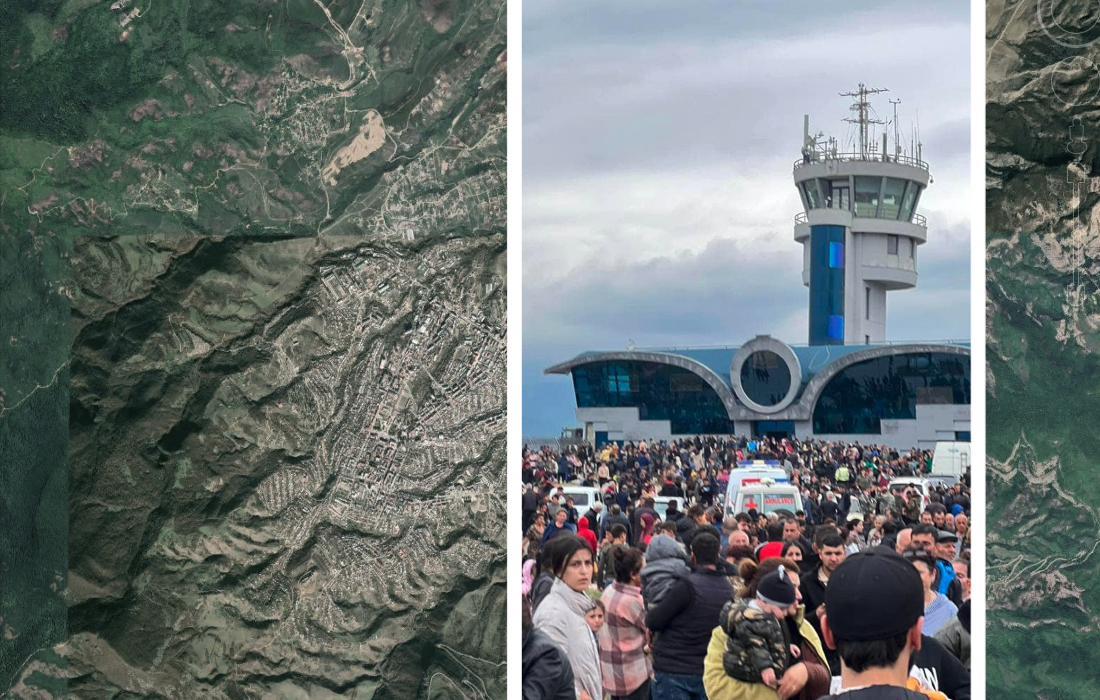Assessing Azerbaijan's S300 Systems
Confirmed Operational Status
Since the installation of two S300PMU2 in Azerbaijan, photos and imagery have confirmed reports of the operational capability and combat readiness of the S300PMU-2 systems. Sean O’Connor spotted the systems in late 2012. Detailed ongoing coverage by IMINT Analysis of the increasing possibility of the resumption of conflict in Nagorno Karabagh has included updates on these systems, including the above imagery and its location. Bellingcat has continued with the Caucasus updates, drawing on the contribution of experts from IMINT Analysis.
The geopolitical and tactical capabilities of the S300PMU-2 have a negative impact on the current balance in the region. Armenia’s Scud B ballistic missile inventory, which was kept secret with its transfer to Armenia in 1996 through to 2011, was Armenia’s only leverage in the arms race between the two countries. Scud B ballistic missiles were capable of bringing the war to a possible early end, due to their 300km range that gave them the ability to strike Azerbaijan’s oilfields. Experts have argued that such a strike would only impact Azerbaijan psychologically, as 24 missiles would need to their hit target for there to be any substantial military and strategic impact. While this is still enough to warrant intervention by major powers in a war, with oil profits going up in smoke, the new S300PMU2 systems currently stationed in Azerbaijan neutralize any ballistic capabilities Armenia has acquired in its attempt to keep up with Azerbaijan’s larger military budget.
Open Source confirms the existence of Armenian Scud Bs, with reports of up to 24 missiles with 8 launchers. However, eight simultaneously launched missiles are not sufficient to overwhelm Azerbaijan’s two S300PMU-2 batteries, which are able to simultaneously launch 12 missiles to counter any Armenian ballistic threat. Azerbaijan has pushed for another order of batteries to fully secure the safety of its oilfields.
Azerbaijan has effectively secured sophisticated air defence capacity against Armenia and its southern neighbour Iran, and against any other potential threat that may arise – even a major power intervention. Oil interests in the region are a priority and, by acquiring the capacity to strike Azerbaijan’s oilfields, Armenia played a card that gave it momentary advantage against Azerbaijan’s much larger military threat. However, Azerbaijan has now firmly secured itself as a major player in the region, not only militarily but also geopolitically, with its current enhanced operational capability and the ability to shoot down various highly sophisticated air targets.



